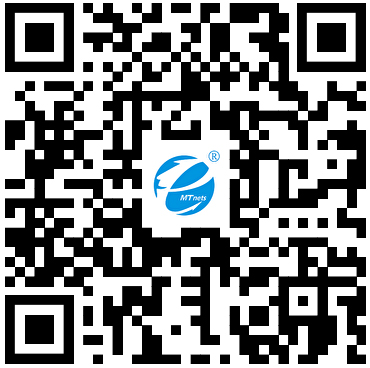真理光学仪器有限公司专注于Gao端颗粒表征仪器的研发和制造,产品涵盖激光(衍射法)粒度分析仪、动态光散射纳米粒度及Zeta电位分析仪以及颗粒图像分析仪,既有实验室仪器,又有在线检测系统。真理光学秉持“科学态度,工匠精神”,为用户提供世界Xian进的Gao端产品和服务。
真理光学汇集了以张福根博士为代表的全国颗粒表征领域的顶尖人才。张福根博士现任本公司董事长兼首Xi科学家,还担任全国颗粒表征及分检与筛网标准化技术委员会副主任委员、天津大学兼职教授,曾担任中国颗粒学会副理事长,同时也是“欧美克”字号公司的创始人。曾担任英国某粒度仪器公司中国总经理20余年的秦和义先生担任本公司商务总经理,中国颗粒学会青年理事潘林超博士、陈进博士担纲公司的研发主力。
激光(衍射法)粒度仪虽然已得到广泛应用,但它并不Wan美,不论是科学基础方面,还是技术方案方面。真理光学的团队针对当前市面上仪器存在的不足,展开了系统的理论研究和技术创新,发现了衍射光斑(爱里斑)的反常变化现象(ACAD),解释了为什么不能测量3μm左右的聚苯乙烯微球,并给出了反常区(不能测量粒径)的一般公式;研究了衍射仪器的测量上限和下限;研究了颗粒折射率偏差对测量结果的影响,发明了两种根据散射光分布估算颗粒折射率的方法;提出了斜置梯形窗口技术方案(Zhuan利),解决了前向超大角测量盲区的问题,使衍射仪器的亚微米颗粒测量水平显著提高;提出了统一的反演算法(专有技术),消除了不同计算模式给出不同结果的尴尬;设计出了高达20Kfps的超高速并行数据采样电路,使干法测量的精度不亚于湿法测量,对高速喷雾场的测量(时间)分辨率也更高。
在纳米粒度及Zeta电位仪方面,真理光学提出了比相位分析法(PALS)更先进的余弦拟合相位分析法(CF-PALS),用光纤分束取代了传统的平板分束镜分束,用光纤内光干涉取代了自由空间干涉,使Zeta电位的测量重复性大幅度提高。
Linkoptik Instruments specializes in the development and manufacture of high-end particle characterization instruments, including laser (diffraction) particle size analyzers, dynamic light scattering nano particle size and zeta potential analyzers, and particle image analyzers, both laboratory instruments and online inspection systems. Linkoptik Instruments upholds the "scientific attitude and craftsmanship" to provide customers with the world's advanced high-end products and services.
Linkoptik Instruments has gathered the top talents in the field of particle characterization in China, represented by Dr. Fugen Zhang. Dr. Zhang is the Chairman and Chief Scientist of our company, and is also the Vice Chairman of the National Technical Committee for Particle Characterization and Sieving and Sieve Standardization, a part-time professor of Tianjin University, and the Vice Chairman of the Chinese Particle Society. Mr. Qin He Yi, who was the general manager of a particle size instrument company in China for more than 20 years, is the commercial general manager of the company, and Dr. Pan Linchao and Dr. Chen Jin, the young directors of the Chinese Particle Society, are the main R&D team of the company.
Although laser (diffraction) particle size measurement has been widely used, it is not perfect, both in terms of scientific basis and technical solutions. The team at Truth Optics has conducted systematic theoretical research and technological innovation to address the shortcomings of the current instruments on the market, discovered the phenomenon of anomalous variation of diffraction spot (Airy spot) (ACAD), explained why polystyrene microspheres around 3 μm cannot be measured, and gave a general formula for the anomalous zone (not measuring particle size); studied the upper and lower measurement limits of diffraction instruments; studied the effect of particle The influence of refractive index deviation on the measurement results was studied, and two methods for estimating the refractive index of particles based on the scattered light distribution were invented; an oblique trapezoidal window technical solution (patented) was proposed, which solved the problem of the blind area of the forward oversized angle measurement and significantly improved the submicron particle measurement level of the diffraction instrument; a unified inversion algorithm (proprietary technology) was proposed, which eliminated the embarrassment of different calculation modes giving different results; the design of The ultra-high speed parallel data sampling circuit of up to 20Kfps has been designed, which makes the accuracy of dry measurement no less than that of wet measurement, and the measurement (time) resolution of high-speed spray field is also higher.
In nanometer particle size and zeta potential measurement, Linkoptik Instruments has proposed a more advanced cosine fitted phase analysis method (CF-PALS) than PALS, replacing the traditional flat beam splitter mirror beam splitting with fiber optic beam splitting, and replacing free space interference with optical interference inside the fiber, which has greatly improved the repeatability of zeta potential measurement.









 采购中心
采购中心
 化工仪器网
化工仪器网